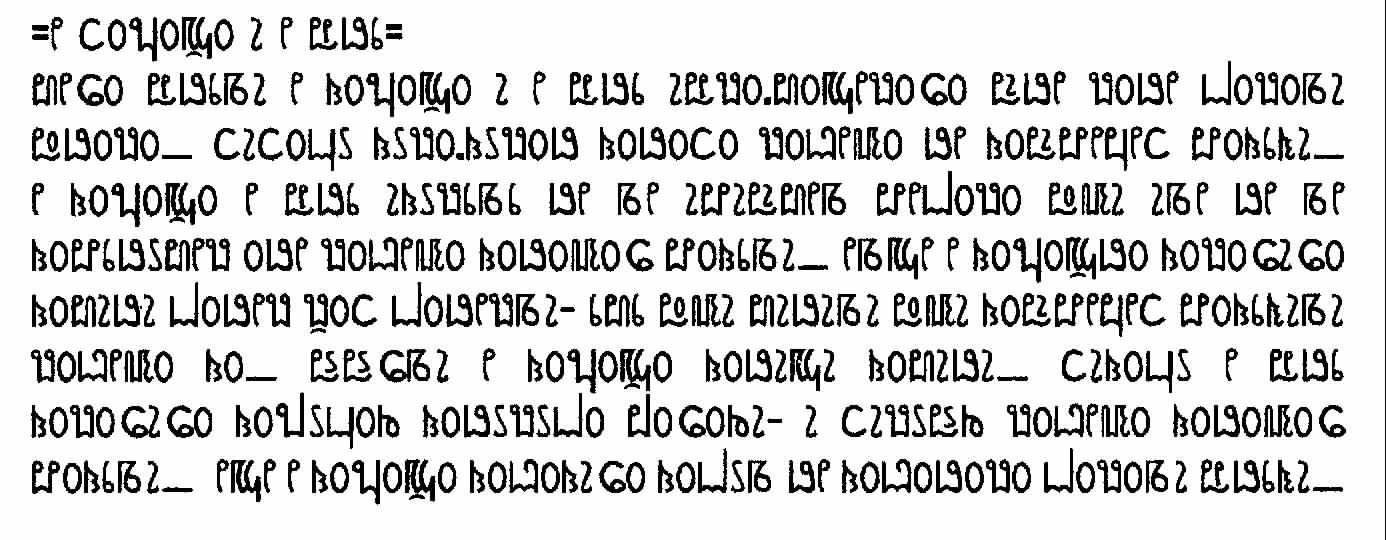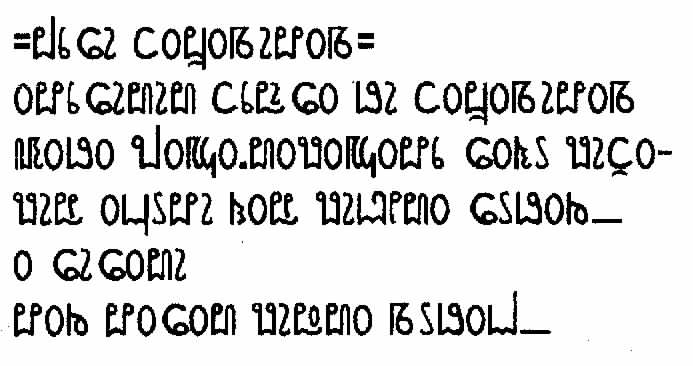The Holundan Kash alphabet originated around 3000 (Cindu) years ago as a syllabary, and some time later was converted to an alphabetic script. In the old syllabary, each consonant symbol carried an intrinsic vowel a, while small super- or subscript signs were used to indicate different vowel sounds. In the modern alphabet, as in our Roman one, each symbol represents just that sound; the old vowel signs, enlarged or modified, became "letters" in their own right. One or two conventions from the syllabary survive in the modern writing system, but in general the alphabet comes very close to achieving the desirable goal of one sound/one symbol. With Romanized equivalents, the Kash alphabet is as follows:
(The sounds ng, nj, nd, mb represent prenasalized stops, roughly as in Engl. bongo, banjo, panda, samba-- except that in English they are clusters, while Kash views them as units.)
The alphabet is recited: ha, ka, anga, ša, ca, anja, ˝a... etc. The vowels are called ani, ini, eni, uni, oni. Kash is written left-to-right. There is no upper/lower case distinction; proper names are sometimes printed in a sloping "italic" type-face. Other fonts, often quite ornate, exist for use in billboards, neon signs, advertisements, etc., but they need not concern us here.
Here are some examples of texts:
The familiar "North Wind and the Sun":

"e yangandra i e lero"
mesa leroni e yangandra i e lero ileka-mandekasa lire kare
šakani laraka. titanju yuka-yukar yarata kaceva re yalipembet
payowi. e yangandra e lero išukono re ne ipilimen pešaka lavi
ine re ne yaporumek are kaceva yaravas payoni. ende e yangandra
yakasisa yamiri šarek krat šarekni, omo lavi mirini lavi
yalipembet payowini kaceva ya. lulusni e yangandra yarindi
yamiri. tiyanju e lero yakasisa yahunja˝ yarukuša fasa˝i, i
tikulu˝ kaceva yaravas payoni. ende e yangandra yacayisa yašun
re yacaraka šakani lerowi.
"The North Wind and the Sun"
One day the North Wind and the Sun were arguing about who had the
greater power. Just then, it happened, a traveler came along,
wrapped in a cloak. The North Wind and the Sun agreed to consider
him the more powerful, who could make the traveler remove his
cloak. So the North Wind began to blow as hard as he could, but
the harder he blew, the more tightly the traveler wrapped his
cloak. Finally he stopped blowing. Then the Sun began to shine,
he ignited his heat, and right away the traveler took off his
cloak. And so the North Wind had to admit that the power of the
Sun was greatest.
And a short poem:

"fosi tambranipan" (to give an idea of the meter,
stressed syllables are in bold)
aposimim tolisa ri tambranipan
vara handa-makandapo sawu
kitra--
kile anjupi yale kiševa
sura˝.
a sisami
pa˝ pasam kilama nuraš.
"Sailing to Tambranipa" (in a rather free
translation):
Our ship called at Tambranipa
just to load and unload cargo, take on water--
you and I barely had time to visit the mountains.
Oh my love,
How fair the moments we shared.
(Tambranipa is a mythical island-- lush, tropical, mountainous, rather like Bali without the tourists.) The poem is in a traditional form called "sisami"-- four 12-syllable lines, the last always beginning "a sisami"; rhyme (if present) is by assonance. Sometimes improvised with humor or sarcasm (and much rule-breaking) when friends gather for an evening of wine and conversation. "Sailing to Tambranipa", however, occupies a place in Kash hearts comparable to "Auld Lang Syne" in ours-- it is said or sung at farewells when good friends part and do not know if they will meet again.
Return to: HOME PAGE
Forward to: PHONOLOGY